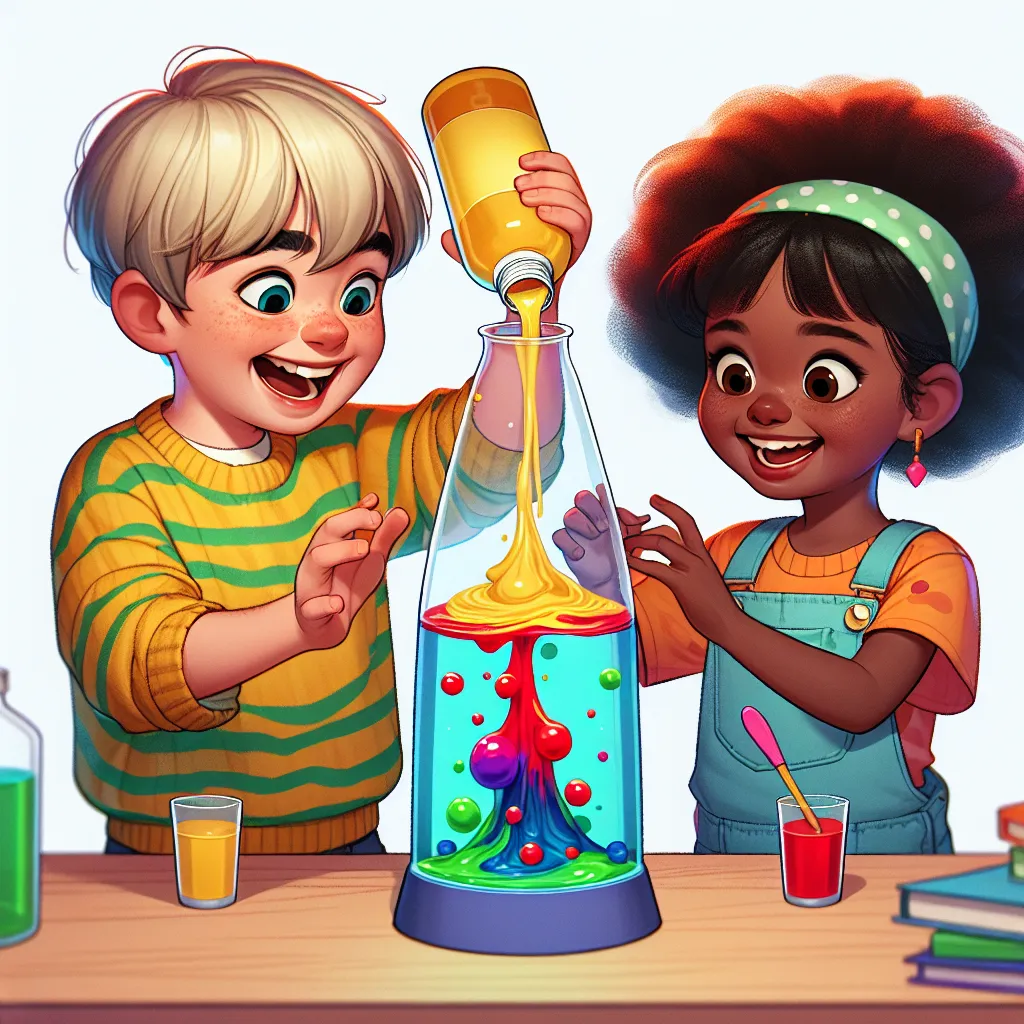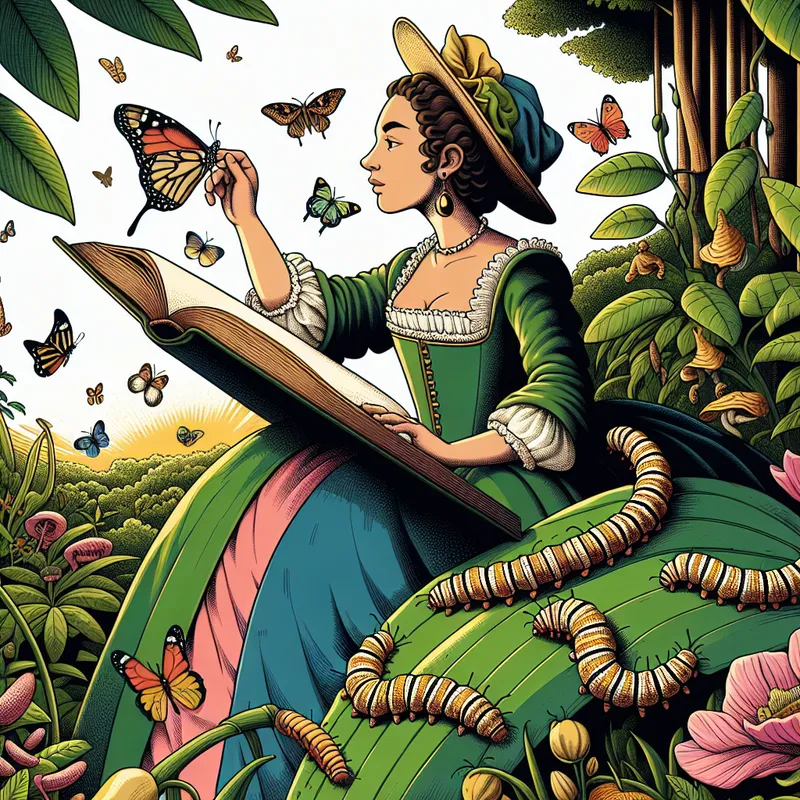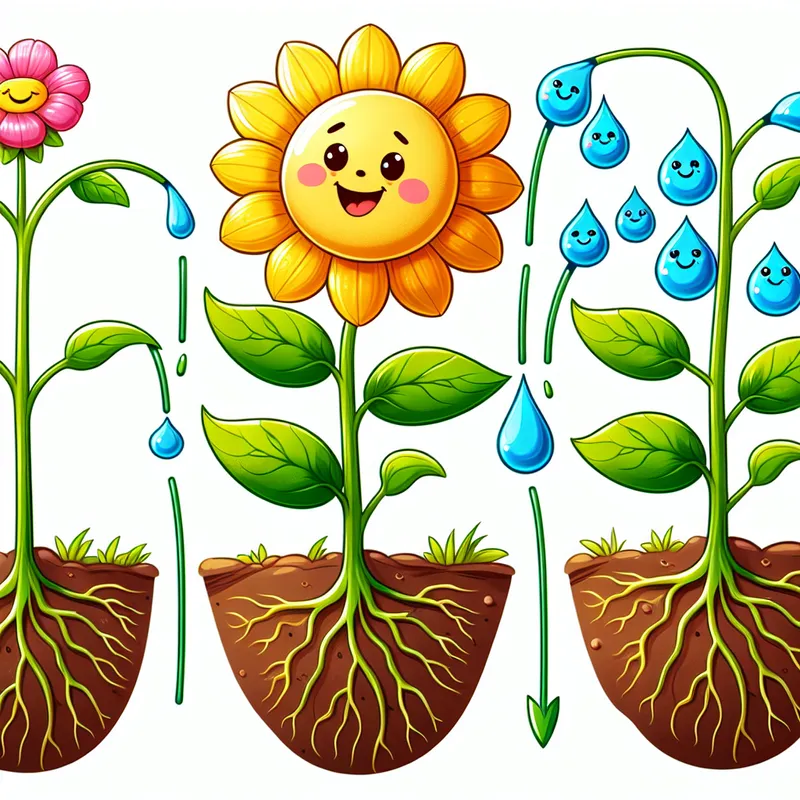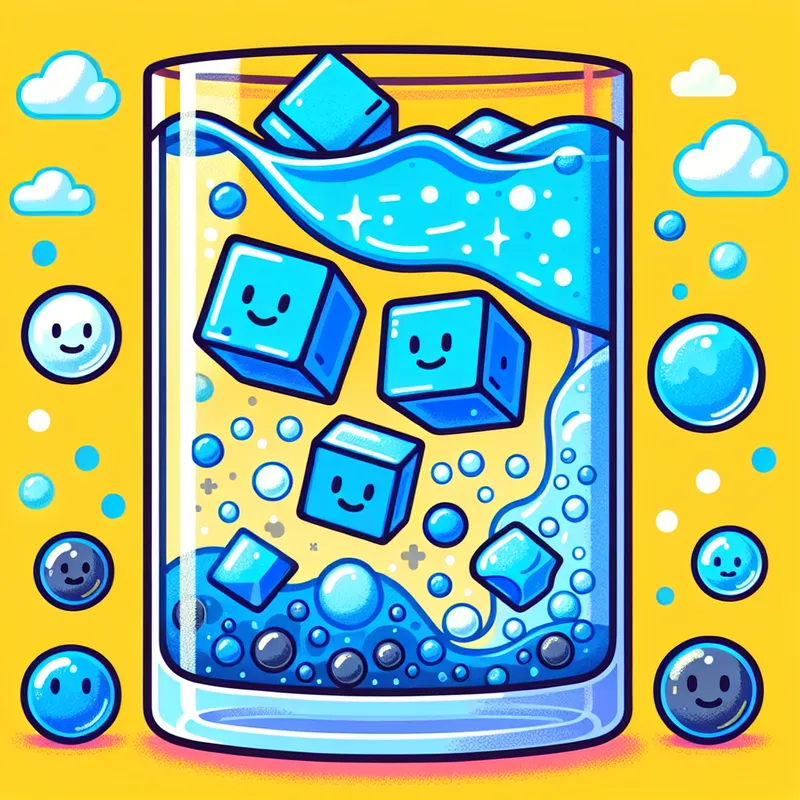Published on 17/01/2025 by James Best
Make Your Own Lava Lamp: Exploring Density’s Dazzling Dance
Let’s Discover Something Amazing
Have you ever watched a lava lamp and wondered how those colourful blobs move up and down so mysteriously? 🤔 It’s like they’re dancing to a secret rhythm! Today, we’re going to unlock the secrets behind this captivating display by making our very own lava lamps. Get ready to explore the fascinating world of density!

Time to Get Our Hands Dirty
Materials Needed
- A clear plastic bottle (or jar)
- Vegetable oil
- Food colouring
- Alka-Seltzer tablets
- Water
- Adult supervision
Safety First
- Ask a grown-up to help with any cutting or handling hot water.
- Be careful not to get any oil or food colouring on your clothes or surfaces.
Let’s Make a Lava Lamp
- Fill the bottle about 3/4 full with vegetable oil.
- In a separate container, mix a few drops of food colouring with 1/4 cup of water.
- Carefully pour the coloured water into the bottle, allowing it to sink to the bottom.
- Break an Alka-Seltzer tablet into a few pieces and drop them into the bottle one at a time.
- Watch as the coloured blobs start to rise and fall, creating a mesmerizing lava lamp effect!
What’s Happening? The oil and water don’t mix because they have different densities. The water is more dense, so it sinks to the bottom. When you add the Alka-Seltzer, it starts to fizz and release gas bubbles. These bubbles attach to the coloured water blobs, making them less dense than the oil. As a result, the blobs rise up through the oil until the gas bubbles pop, allowing the blobs to sink back down. It’s a continuous cycle of rising and falling, all powered by density!
Mind-Blowing Facts
- Did you know that the first lava lamp was invented in 1963 by a British inventor named Edward Craven Walker? 🤯
- The blobs in a lava lamp can move as slowly as every 6 hours or as quickly as every 30 seconds, depending on the temperature and the type of wax used.
- Some lava lamps have been known to operate continuously for over 40 years! Talk about a long-lasting party! 🕺
Your Turn to Explore
- Try experimenting with different types of oils or liquids to see how the density affects the movement of the blobs.
- Add more food colouring or try different colours to create your own unique lava lamp design.
- Can you think of other household items that could be used to create a similar density-based effect?
The Big Question
Now that you’ve witnessed the mesmerizing dance of density, what other natural phenomena or everyday situations can you think of where density plays a crucial role? Share your thoughts and discoveries with your family and friends, and keep exploring the wonders of science all around you! 🔬✨
Written by James Best
← Back to blog





